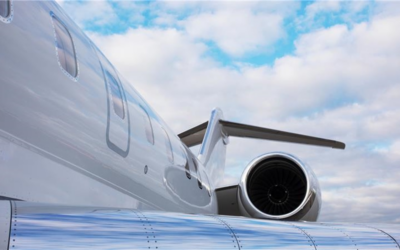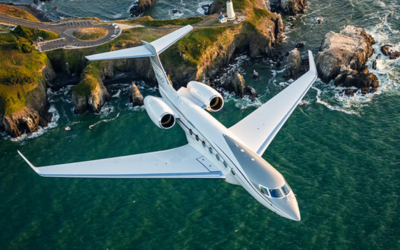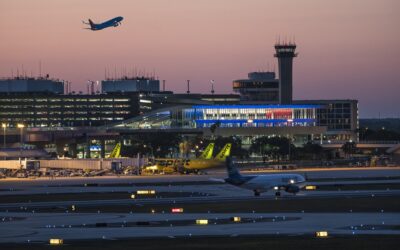Dassault celebrates 60 years of Falcon business jets

“For an aircraft to fly well, it must be beautiful,” Marcel Dassault said.
The Mystère 20, or Falcon 20, on its first flight
Marcel Bloch forged an empire in 1929, changing his surname to a name that is now synonymous with sleek business jets, Dassault. On May 4, 1963 Dassault changed its trajectory with the first flight of the Mystère 20, the company’s first business jet. Now, Dassault celebrates 60 years of business jets and the future, as more advanced models are taking center stage.
Already known for its Mirage fighters, Dassault shifted gears to entice the American market with the Mystère 20, which would later be known as the Falcon 20. Dassault re-entered the civilian market in the new and thriving business jet sector. The Falcon 20 impressed the likes of Charles Lindbergh, Pan Am chief executive Juan Trippe, and FedEx founder Fred Smith.

Marcel Bloch, later Marcel Dassault was imprisoned in a concentration camp and deported to Buchenwald, where he stayed from August 1944 to April 1945
The original founder, who saw the company through every transition, even forced to stay in a concentration camp in the 40s before returning to his beloved company. The original Dassault, Marcel, survived the perils of war and the Nazis at Drancy concentration camp before being deported to Buchenwald. He refused to collaborate with the occupying force, with a goal to survive and continue producing aircraft after the war. He took the company from its start in 1929 to the leading bizav and military company we see today. Leading as CEO until his death in 1986. He welcomed business jets into production and they have become a staple in the industry with a proud 60-year history.
The pioneer in Dassault business jets, the Falcon 20, went on to inspire 27 different models. Buyers began to prefer the Falcon family, known for the safety features reminiscent of the fighter structure and systems Dassault had been known for during WWII. The jet had safety improvements like a heads-up cockpit display and digital flight controls, which later spread across the whole industry.

Photo courtesy of Dassault Falcon – Airborne Films
Dassault uses its design and focus to create bold new variants, like the Falcon 6X and Falcon 10X. These aircraft have the largest cabin cross sections in the business aviation industry, once again pioneering a new standard for long-range passenger comfort. The two models have been recognized with prestigious interior design awards within the design community. The 6X will have Dassault’s most advanced digital flight control system. The 10X is still in assembly and according to Dassault, will come with even more advanced systems and safety features.
“The formula has not changed,” Dassault Aviation’s Chairman and CEO Eric Trappier said. “Every Dassault aircraft must have superb handling, beautiful lines, and rugged construction. And, of course, it has to provide state-of-the-art comfort.”

The May 4, 1963 first flight
Through 60 years and 2,700 jets, Dassault has made its mark in the bizav world, from the start on the evening of May 4, 1963 when test pilots René Bigand and Jean Dilliare took the Falcon 20 on its inaugural one-hour flight. The flight was pushed to the evening as Lindbergh stopped by to see the jet on behalf of Pan Am. Once Lindbergh left, the flight team prepared for takeoff.
Lindbergh, impressed by what he had seen, wired Pan Am CEO Trippe, telling him “I’ve found our bird.”

Charles Lindbergh visit on May 4, 1963
Pan Am ordered 40 units with the option for 120 more, establishing Pan Am Business Jets to run its executive jet operations. This later grew into Dassault Falcon Jet, owned by Dassault Aviation. DFJ is headquartered in Teterboro, New Jersey and is responsible for the representation and support of U.S. Falcons.
Smith, the founder of FedEx, ordered a fleet of 33 Falcon 20s with a modified large cargo door in 1973. In the 80s the U.S. Coast Guard ordered 41 modified for search and rescue. Dassault built nearly 500 20-series aircraft in total.
Popularity grew for Falcon jets and Dassault began to introduce a series of new models. There are currently over 2,100 Falcons operating in 90 countries around the world. The Falcon 2000 has become the best-selling model with nearly 700 delivered so far. This economical and efficient model has remained at the top of its class.

Falcon 2000, photo courtesy of Dassault Aviation – K. Tokunaga
The second-best seller is the workhorse Falcon 900 which has its own iterations. More than 550 of the Falcon 900 have been delivered, including two recent deliveries to the Royal Air Force for VIP transportation service.
The fly-by-wire Falcon 7X/8X line has also proven to be popular. Roughly 400 of these long-range models have been introduced to the market.
“Through these different models, we have built up a strong legacy and a solid base of technological know-how that makes us confident in our ability to continue developing new products that fully meet customer expectations,” Trappier said. “Sixty years on, Falcons are still completely distinctive in the business jet world: beautiful, delightful to fly, and always on the leading edge of technology, bringing safety, comfort and productivity benefits to operators around the globe.”

Dassault has had over 60 years of accomplishments and will continue to advance moving forward. Dassault introduced innovation and technological advances in its designs, giving the pilots an electrical system rather than manual, which had become difficult for many pilots who now needed hydraulic power assistance. As early as 1970, Dassault invested in computer-aided design (CAD) and developed software from 3-D designs to enhance production straight from its drawings.
In the mid-70s, the world was feeling the impact of the rising raw material prices following the oil shock of 1973-74 and the Iranian crisis in 1979. From 1975 to 2000, fewer prototypes were entering the flight test phase, with most types of aircraft having already been tested. In an age of digital revolution, Dassault optimized every design and each model before its first flight.
In 1986, company founder Marcel Dassault died and new Chairman and CEO Serge Dassault took the reins. The fall of the Berlin Wall in 1989 led to a drop in sales, as the international climate was heating up. The drop in orders led to an eventual decrease in production. The company restructured when the market recovered in the 90s and transitioned into the 21st century.

Founder Marcel Dassault at age 94 on April 17, 1986
Dassault worked to reduce the cost of aircraft manufacturing, relying more on computer systems and Dassault Systèmes software. The company began to balance its military and civilian expertise on a new front, utilizing a single design department and the same plants to produce its military and business aircraft.
Dassault has survived wars, recessions technological changes, political turmoil, a global pandemic and the birth of a new century. On the military front, Dassault aircraft continue to stand out, like they once did during WWII. In continuing with its adaption to the evolution of time and technology, Dassault continues to improve on its avionics and maintenance, as well as introducing new models like the Falcon 10X.
RELATED STORIES:
Dassault Little Rock facility now offering SAF
Dassault reveals record orders, backlog in yearly report
The industry hopes to have net zero carbon emissions by 2050, which has rolled out the introduction of alternative fuel methods like SAF. Dassault recently began offering SAF at its Little Rock facility in Arkansas. Order intakes in 2022 reached an all-time high and the backlog is continually growing.
Dassault has had success as a company for close to 100 years and in the business aviation market for 60. It is hard to say what the future will hold for Dassault, but the company will likely stay at the forefront of the industry and continue to build stunning and technologically-advanced aircraft.
Contact
Name: Haley Davoren
, Digital Content Manager
Company: GlobalAir.com
Website: https://globalair.com
Email: [email protected]
Phone: 502-456-3934
©2023 GlobalAir.com, Haley Davoren. All rights reserved.
Recent Posts
- The Ownership Equation: Buy the Jet or Buy the Share?
- President Trump and DOT announce plans to upgrade D.C. airport
- Report finds 84% drop in corporate jet travel out of Austin as global traffic climbs
- Atlantic Aviation expands to the Caribbean with new location
- Static display to be given new location and updated layout at EBACE 2026







Recent Comments